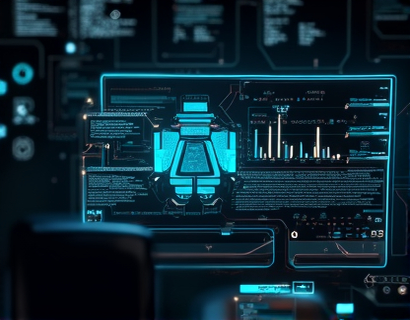Elevating Healthcare Operations with Advanced Software Solutions
In the rapidly evolving landscape of healthcare, medical professionals and organizations are constantly seeking ways to enhance patient care while streamlining operations. The integration of cutting-edge software solutions has emerged as a pivotal strategy to achieve this balance. Advanced software solutions are revolutionizing the way healthcare providers manage their day-to-day activities, allowing them to focus more on delivering exceptional medical services. This article delves into the transformative impact of these technologies, highlighting how they streamline administrative tasks, enhance patient care, and boost overall operational efficiency.
The Need for Advanced Software in Healthcare
The healthcare industry is characterized by complex and diverse operational requirements. From patient scheduling and appointment management to billing and compliance with regulatory standards, the administrative burden on healthcare providers is significant. Traditional methods often lead to inefficiencies, errors, and a substantial time drain, which can detract from the quality of patient care. Advanced software solutions address these challenges by automating routine tasks, providing real-time data insights, and facilitating seamless communication among healthcare teams.
Streamlining Administrative Tasks
One of the most immediate benefits of implementing advanced software in healthcare is the streamlining of administrative tasks. These solutions offer comprehensive tools for managing patient records, scheduling appointments, and handling billing processes. For instance, electronic health records (EHR) systems centralize patient information, making it easily accessible to authorized personnel. This not only reduces the risk of miscommunication but also ensures that patient data is up-to-date and accurate. Automated scheduling systems eliminate the need for manual booking, reducing no-show rates and optimizing clinic capacity.
Moreover, advanced software solutions integrate various functionalities into a single platform, eliminating the need for multiple disparate systems. This integration reduces the administrative workload, minimizes errors, and enhances data security. Providers can allocate more time to patient interactions and less to paperwork, thereby improving overall productivity and job satisfaction.
Enhancing Patient Care
The primary goal of any healthcare provider is to deliver high-quality patient care. Advanced software solutions play a crucial role in this endeavor by providing tools that directly impact patient outcomes. For example, patient portal platforms enable patients to access their medical records, view test results, and communicate with healthcare providers securely. This level of engagement empowers patients to take a more active role in their healthcare, leading to better adherence to treatment plans and improved health outcomes.
Telehealth applications are another critical component of modern healthcare software. These platforms facilitate remote consultations, making healthcare more accessible, especially for patients in remote or underserved areas. By reducing the need for in-person visits, telehealth services can lower the risk of infection transmission and save patients time and travel costs. Additionally, data collected from telehealth interactions can be seamlessly integrated into EHRs, ensuring a comprehensive view of the patient's health status.
Boosting Operational Efficiency
Operational efficiency is a key factor in the success of healthcare organizations. Advanced software solutions contribute significantly to this by optimizing workflows, reducing bottlenecks, and providing actionable insights. For instance, practice management software can analyze scheduling data to identify peak times and suggest optimal staffing levels. This ensures that resources are utilized efficiently, reducing wait times and improving patient satisfaction.
Supply chain management is another area where software can make a substantial difference. Inventory management tools track stock levels, automate reordering processes, and predict future needs based on historical data. This reduces the risk of stockouts and overstocking, ensuring that medical supplies are always available when needed. Furthermore, these tools can help healthcare providers negotiate better deals with suppliers by providing accurate demand forecasts.
Data Analytics and Decision Making
One of the most powerful aspects of advanced healthcare software is its ability to harness and analyze large volumes of data. Data analytics tools provide insights that can inform strategic decisions, improve operational performance, and enhance patient care. For example, predictive analytics can identify patients at risk of readmission by analyzing historical data and identifying patterns. This allows healthcare providers to implement targeted interventions, reducing readmission rates and improving patient outcomes.
Quality reporting and compliance are also critical areas where data analytics shine. Automated reporting tools generate comprehensive reports on key performance indicators, helping providers meet regulatory requirements and demonstrate accountability. These tools can track patient satisfaction scores, infection rates, and other metrics, providing a clear picture of the organization's performance. This data-driven approach enables providers to make informed decisions and continuously improve their services.
Interoperability and Integration
Interoperability is a fundamental requirement for modern healthcare software. The ability to seamlessly exchange and use data across different systems and platforms is essential for ensuring continuity of care and enhancing patient outcomes. Advanced software solutions are designed with interoperability in mind, supporting standards such as HL7 and FHIR. This allows for smooth data exchange between EHRs, lab systems, and other healthcare applications, reducing the risk of data silos and ensuring that all stakeholders have access to the most current information.
Integration with third-party services is another critical feature. For example, integrating with pharmacy management systems can streamline prescription processing and reduce medication errors. Similarly, integrating with financial management tools can simplify billing and insurance claims, reducing administrative burdens and improving cash flow. These integrations not only enhance efficiency but also provide a more cohesive and patient-centered care experience.
Security and Compliance
In the healthcare sector, data security and compliance with regulations such as HIPAA are paramount. Advanced software solutions are built with robust security measures to protect sensitive patient information. Encryption, access controls, and regular security audits ensure that data is safeguarded against unauthorized access and breaches. Compliance management tools help organizations stay up-to-date with changing regulations, automating necessary updates and providing training resources for staff.
Transparency and trust are crucial in healthcare, and demonstrating a commitment to security and compliance can enhance a provider's reputation. Patients are more likely to trust and engage with organizations that prioritize their data privacy and security. By leveraging advanced software that meets or exceeds regulatory standards, healthcare providers can build stronger relationships with their patients and stakeholders.
Future Trends and Innovations
The healthcare technology landscape is continually evolving, with new innovations on the horizon. Artificial intelligence (AI) and machine learning are poised to play an increasingly significant role in healthcare software. AI-driven tools can analyze vast amounts of data to identify trends, predict patient outcomes, and personalize treatment plans. For example, AI-powered diagnostic tools can assist radiologists in detecting anomalies with higher accuracy and speed, reducing the workload and improving diagnostic accuracy.
Another emerging trend is the use of blockchain technology in healthcare. Blockchain can enhance data security and interoperability by providing a decentralized and immutable ledger for storing and sharing medical records. This can streamline data exchange between different healthcare providers and systems, ensuring that patient information is accurate and tamper-proof.
Virtual and augmented reality technologies are also finding applications in healthcare, from training simulations for medical professionals to immersive therapy sessions for patients. These technologies can enhance the learning experience for students and provide innovative treatment options for conditions such as PTSD and chronic pain.
Conclusion
The integration of advanced software solutions in healthcare is transforming the way medical professionals operate, enabling them to focus more on delivering exceptional patient care. By streamlining administrative tasks, enhancing patient engagement, boosting operational efficiency, and providing valuable data insights, these technologies are paving the way for a more efficient and patient-centered healthcare system. As the industry continues to evolve, embracing innovation and leveraging cutting-edge software will be essential for healthcare providers aiming to stay competitive and deliver the best possible care.











































